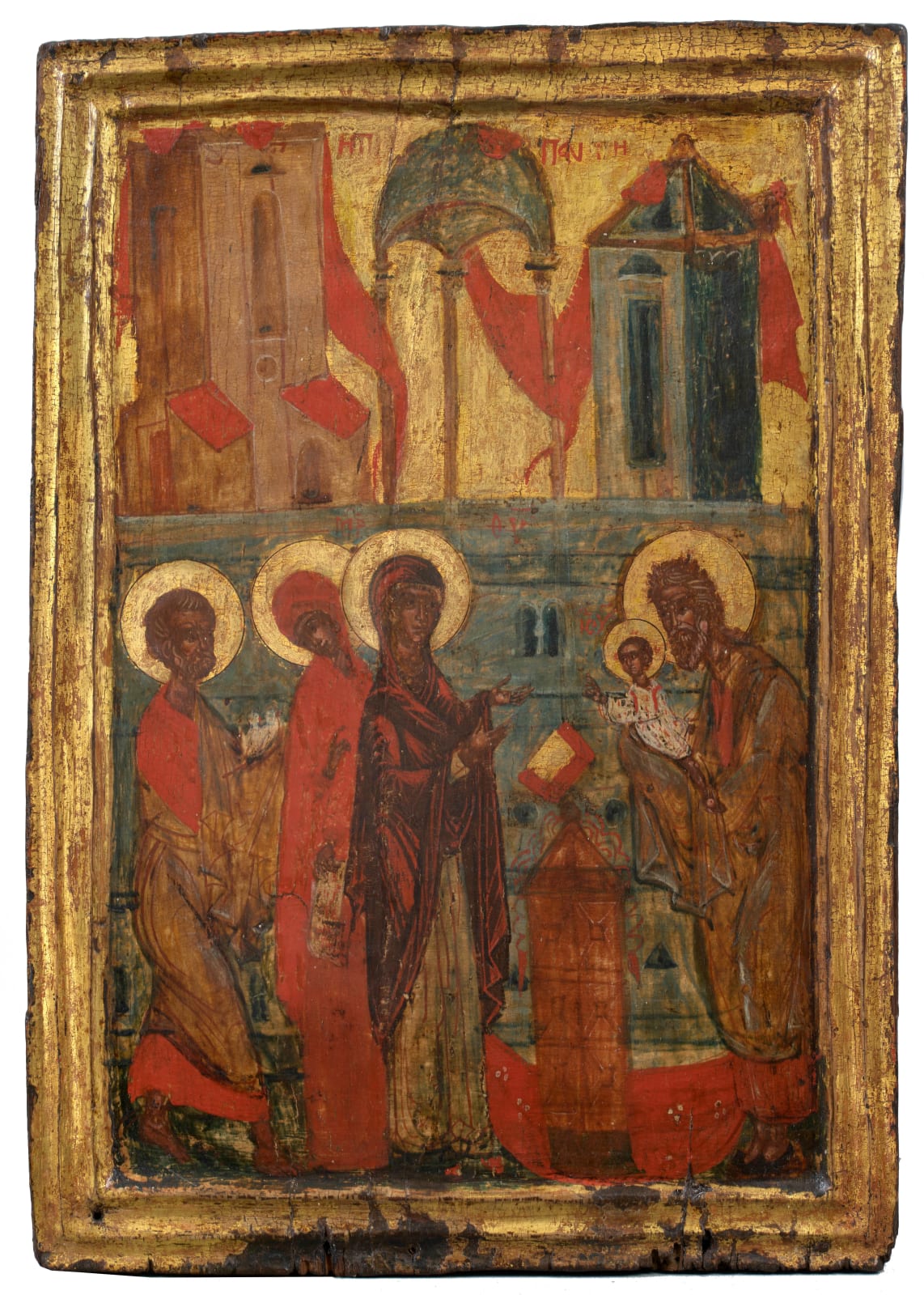Presentation of Christ in the Temple
The Presentation of Christ in the Temple is one of the twelve ‘Great Feasts’ of Orthodoxy. Our icon, at least in the lower part, follows the traditional imagery of the scene which takes place in the Temple in Jerusalem and illustrates the text from the Gospel of Luke (2:27-32). There is a good 15th century example in the Metropolitan Museum, New York and another in the McCarthy collection in Australia. The Mother of God hands the infant Jesus to Simeon the Prophet in the event that inspired the ‘Nunc Dimitis’: ‘Lord, now lettest thou thy servant depart in peace’[1]. On the left is Joseph holding two turtle doves, a sacrificial offering required by Mosaic law.[2] Standing between Christ’s parents is Saint Anna the Prophetess clothed in bright red.
The feast originates from ancient times and is known from at least the fourth century. Its iconographic representation was fully established by the ninth century. The prominence given to St Simeon stems from ancient liturgical texts where he is described as ‘the greatest of the prophets: more even than Moses’ and ‘he who has seen God’.
The background with its baldachin and architecture represents the Temple at Jerusalem where the event takes place. But our painter, while respecting the form, goes further. By emphasising the horizontal that divides the upper from the lower part of the composition he invites us to glimpse the ecstasy of the divine world above as distinct from the earthly scene below.
The divine world is considered unknowable for human beings but the artist renders it through abstract and symbolic means: the extended verticality of the buildings, the wind-blown festoons and drapes, red against gold, create the world of ‘celestial intelligences’ described by the 6th century mystical writer Dionysius the Areopagite. The appearance of God in the lower world in the person of the Child Jesus, as witnessed by Simeon, emphasises the idea of the Incarnation and the dynamic interaction between both worlds.
Though it cannot be read here Saint Anna’s scroll would be inscribed ‘This Child has created heaven and earth.’ [3] which refers to the idea of two worlds and is a reference to countless utterances in scripture, in the Psalms of David, the Creed and elsewhere e.g. ‘the Lord who made heaven and earth’ (Ps. 115. v. 5)
[1] The full text is Lord now lettest thou thy servant depart in peace, according to thy word. / For mine eyes have seen thy salvation / which thou hast prepared before the face of all people / A light to lighten the Gentiles, and the glory of thy people Israel.
[2] Leviticus 12:8
[3] I have not been able to identify the source of this but it may echo Psalm 115 v. 16. ‘All the whole heavens are the Lord’s; the earth hath he given to the children of men.’

